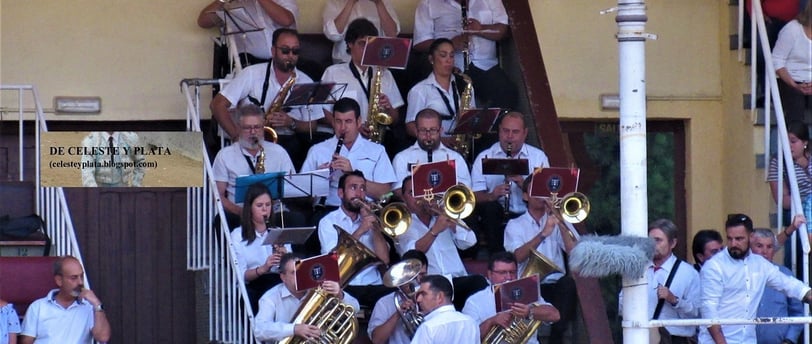The Evolution of Music in Bullfighting: From Fanfares to Flamenco
In this blog, we explore the fascinating history of music in bullfighting, from its early beginnings as simple fanfares to the elaborate and diverse soundscapes of today. We delve into the evolution of bullfighting music over the centuries, examining the key composers and styles that have shaped this important aspect of the bullfighting tradition. We also consider the current state of music in bullfighting, including the ongoing debate around its role in the spectacle. Whether you're a seasoned aficionado or a curious newcomer to the world of bullfighting, this blog offers a unique perspective on one of the most captivating and complex cultural traditions in the world.
4/9/20232 min read


Music is an integral part of the bullfighting experience, as it sets the tone for the entire spectacle. From the somber and reverent sounds of the paseíllo to the triumphant fanfares of the torero’s entrada, the music in the bullfighting arena is as important as the bull and the torero himself. In this blog, we will explore the role of music in bullfighting, its history, its evolution, and its current state.
History
The use of music in bullfighting can be traced back to the early 19th century, when the first bullfighting schools were established in Spain. At the time, the music played in the bullfighting arena was limited to simple fanfares and marches, often performed by amateur musicians. However, as the art of bullfighting became more sophisticated, so did the music.
In the mid-19th century, bullfighting music began to take on a more artistic and elaborate form, thanks in large part to the influence of the composer Francisco Asenjo Barbieri. Barbieri was one of the first composers to write music specifically for bullfighting, and his works were characterized by their melodic complexity and emotional depth.
As bullfighting continued to evolve in the late 19th and early 20th centuries, so did the music. New composers emerged, such as Joaquín Turina and Manuel de Falla, who brought a more modern and experimental approach to the music. They incorporated elements of flamenco, jazz, and classical music into their compositions, creating a rich and diverse sound that reflected the changing times.
Evolution
In the mid-20th century, the music in bullfighting underwent another transformation, as the focus shifted from the torero to the bull itself. The composer Antón García Abril, who worked closely with the famous torero Francisco Rivera "Paquirri," created a new style of bullfighting music that emphasized the majesty and power of the bull. His works were marked by dramatic shifts in tempo and dynamic contrasts, as well as the use of unconventional instruments such as the cimbalom and the waterphone.
Today, the music in bullfighting continues to evolve, with new composers and performers adding their own unique touches to the tradition. Some, like the Spanish composer Juan Manuel Cañizares, draw inspiration from the ancient Arabic and Sephardic musical traditions, while others, like the Mexican composer Arturo Márquez, incorporate elements of contemporary Mexican popular music into their works.
Current State
Despite the ongoing evolution of the music in bullfighting, the traditional forms still remain popular among aficionados. The pasodoble, a type of dance music that originated in Spain in the 19th century, is still a staple of bullfighting music, and is played during the paseíllo and the entrada. Other traditional forms, such as the marcha torera and the corrido, also continue to be performed in the bullfighting arena.
However, the role of music in bullfighting has also come under scrutiny in recent years, with some critics arguing that it detracts from the seriousness of the event. They argue that the music, particularly the upbeat pasodobles, encourages a sense of frivolity and entertainment that is inappropriate for an activity that involves the killing of an animal.
Conclusion
In conclusion, the music in bullfighting is an important and enduring aspect of the tradition. Its history and evolution reflect the changing times and tastes of society, while its continued popularity among aficionados speaks to its enduring appeal. However, as with all aspects of bullfighting, the role of music is not without controversy, and its place in the arena remains the subject of debate.
